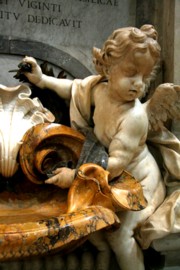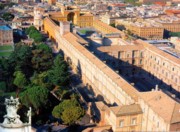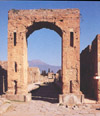
ROME WALKING TOUR (VATICAN MUSEUMS, SISTINE CHAPEL AND ST. PETER’S BASILICA) FOR DISABLED
Details
3-HOUR TOUR OF THE VATICAN MUSEUMS, THE SISTINE CHAPEL AND ST. PETER’S BASILICA FOR DISABLED
|
DURATION: | 3 hours | |
|
PRICE: | Based on the number of participants | |
|
AVAILABILITY: |
All-year-round |
THE PRICE INCLUDES: |
Local English-speaking Guide for the 3-hour visit of the Vatican Museums, the Sistine Chapel and St. Peter’s Basilica THE ENTRANCE FEES ARE NOT INCLUDED |
This tour route, designed specifically for the disabled, is completely step-free. To avoid the stairs situated in the Vatican Museums, near the Sistine Chapel, and at the entrance to St. Peter’s Basilica, You will use a combination of elevators, ramps, and wheelchair lifts.
You’ll meet our professional English-speaking guide in the prearranged meeting-point, which can be changed according to guests requirements:
The tour itinerary takes the visitors through the most significant cultural and religious areas within the Vatican Museums: the Pio Clementino (classical antiquity), the Gallery of maps and the Gallery of Tapestries (Renaissance art), the Raphael’s Rooms, The Sistine Chapel, the St. Peter’s Basilica (without visit of the dome) and finally the Piazza del Bernini .
The entrance to the Vatican is through one of the world’s greatest public spaces – Bernini’s St. Peter’s Square (Piazza San Pietro). As you stand in the huge square (no cars allowed), you’are in the arms of an ellipse partly enclosed by a majestic Doric-pillared colonnade, atop which stand statues of some 140 saints. Straight ahead Is the façade of the St. Peter’s Basilica (the statues represent Saints Peter and Paul, Peter carrying the Keys to the Kingdom), and to the right, above the colonnade, are the dark-brown buildings of the papal apartments and the Vatican Museums.
The inside of the Basilica is almost too huge to take in; walking from one end to the other is a workout, and the opulence will overpower you. On the right as you enter is Michelangelo’s exquisite Pietà, created when the master was in his early 20s (Because of an act of vandalism in the 1970s the statue is kept behind reinforced glass). Dominating the nave is Bernini’s 96-ft. tall baldacchino, supported by richly decorated twisting columns. Completed in 1633, it was criticized for being excessive and because the bronze was supposedly taken from the Pantheon. It stands over the papal altar, in turn stands over the tomb of St. Peter. A bronze statue of St. Peter marks the tomb; and its right foot has been worn away by the thousands of pilgrims kissing it in the traditional devotional devotional gesture to salute the pope. By the apse, above in altar, is the bronze throne sculpted by Bernini to house the remains of what is, according to legend, the chair of St. Peter.
The enormous complex of the Vatican Museums could swallow up your entire vacation with tons of Egyptian, Etruscan, Greek, Roman, paleo-Christian and Renaissance art.
Also part of the museums are the Raphael’s Rooms – in fact the private apartments of Pope Julius II, which were frescoed by the artist. The largest of the four rooms in the room of Costantine, painted between 1517 and 1524, which illustrates key moments in the life of the first Christian emperor, including his triumph over Maxentius and his vision of the cross. Along the way you’ll come across the Borgia Apartments, designed for Pope Alexander VI, and the Chapel of Nicolas, with frescoes by Fra Angelico.
But, of course, it is the Sistine Chapel, Michelangelo’s masterpiece. Whether you like the colours of the drapery or not, Michelangelo’s modelling of the human form is incredible.












